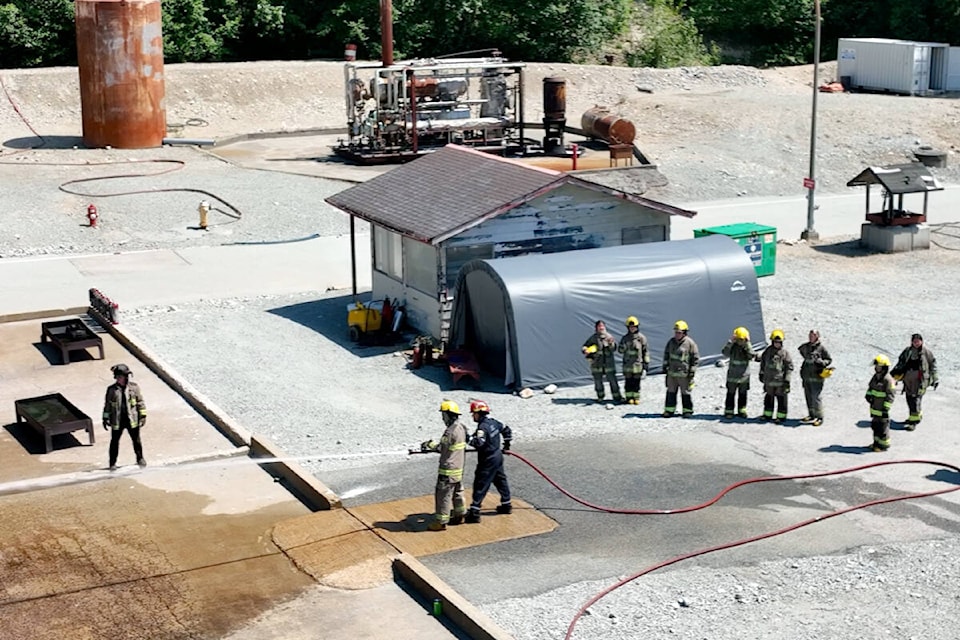By Kemone Moodley/Special to The News
A team of nine Indigenous teens were given a first-hand look at what it means to fight fires.
Last month, the Justice Institute of British Columbia’s (JIBC) welcomed members of its Indigenous Youth Career Camp (IYCC) to the fire safety training centre in Maple Ridge, for its first in-person session since the pandemic.
Though none of the camp’s youth could be reached for comment, Jason La Rochelle, the director of the JIBC’s office of Indigenization, shared some feedback he received that ensured him they enjoyed the experience.
“They’re thankful that they chose to attend the camp because they thought they knew what the firefighting was about. But once they get a chance to gear up and experience it, they [realize] there are different options even within this broader kind of career,” La Rochelle said.
Running from July 18 to 22, the camp took place at various JIBC’s campuses around the Lower Mainland, where the nine participants – all between 14 and 20 years old, were introduced to different career optoins in public safety.
Attending the 256th Streeet training centre, the teens experienced what he called the ins and outs of firefighting.
This included learning about fires – the different types and how they start — fire extinguisher theory, what it is to wear firefighter gear, and fundamentals of using equipment for firefighters.
In addition to firefighting, the campers experienced sessions with JIBC’s emergency medical responders, police officers, corrections and court services, emergency management, and community and social justice divisions. They were also given a chance to accompany members from the sheriff academy to the New Westminster Courthouse.
“These careers — policing, firefighting, paramedics, and corrections — have particular histories with Indigenous people that not a lot of people know about,” said La Rochelle.
“And [that’s] all the more reason that we really need more Indigenous people to consider these types of careers in the future. And part of that starts with kind of knowing a bit more about how you get into these kinds of careers,” he added, noting the camp was completely funded by the Ministry of Advanced Education and Skills Training.
RELATED: Firefighters add digital simulator to real-world training in Maple Ridge
The IYCC is part of the JIBC’s ongoing mission to educate Indigenous youth about the different public safety careers available to them through a focus on Indigenous perspectives and identities.
In operation since 2017, the camp includes participants from many Indigenous communities, including those outside of B.C., who have access to JIBC Elders-in-Residence and the option to partake in daily rituals and ceremonies such as smudging.
This focus on Indigenous inclusion in careers and education is part of the JIBC’s belief that the Indigenous worldviews and perspectives are essential towards achieving Truth and Reconciliation for the country — which is crucial for Indigenous youth who, according to JIBC, “will make up a significant portion of British Columbia’s future workforce.”
As such, by showing that co-existence between Indigenous cultures and careers in public safety are possible, the JIBC hopes that more youth will consider them as an option, said La Rochelle.
“A lot of the experience that the youth will gain [at the camp] will give them that kind of perspective and knowledge. And that’s some of the feedback that youth have given me in past camps, that they didn’t know what the opportunities were.”
.
Have a story tip? Email: editor@mapleridgenews.com
Like us on Facebook and follow us on Twitter.
